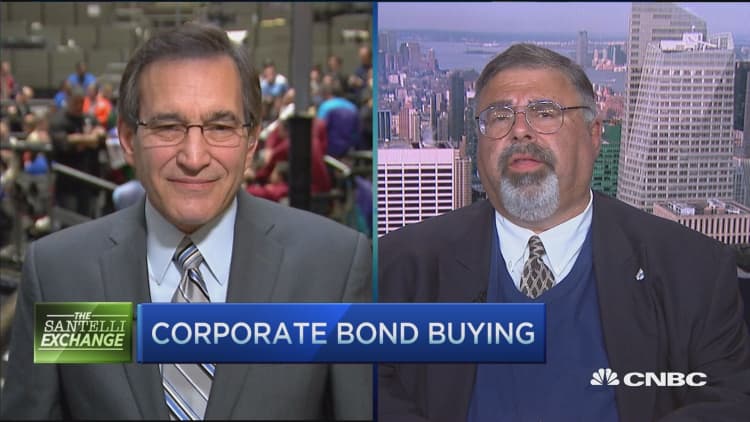
Wednesday's Fed meeting likely will come down to two words, and "rates" won't be one of them.
Practically no one expects the Federal Open Market Committee — the central bank's monetary policymaking arm — to raise its key interest rate target when the panel releases its post-meeting statement Wednesday.
Instead, Wall Street's eyes will be trained firmly on how FOMC officials see economic growth progressing.
In that light, the words Fed-watchers should be focused on most are "nearly balanced."
That assessment, or slight variations thereof, has become a staple of post-meeting statements since 2000.
Officials have used the words to assess the outlook for employment and economic activity in general. However, the terminology has been missing the past two meetings as the Fed has found itself in a quandary over whether it should continue down the path of normalizing interest rates after sitting near zero for seven years.
A return of the assessment to the statement released Wednesday — and specifically the judgment that risks are "nearly balanced" — would send a signal that the FOMC is leaning toward resuming rate hikes. The Fed last increased its rate target in December, with the quarter-point move being the first since 2006.
"We expect the statement to say that risks to the outlook are 'nearly balanced,' or to otherwise indicate that downside risks have receded somewhat since early this year," Goldman Sachs economists Zach Pandl and Jan Hatzius said in a note to clients.
"For example, the statement may include language similar to that used at the October 2015 FOMC meeting, which said: 'The Committee continues to see the risks to the outlook for economic activity and the labor market as nearly balanced but is monitoring global economic and financial developments,'" the Goldman team added.
A slowdown in U.S economic activity and disturbances around the world have inspired the Fed to take a more cautious approach recently.
In the U.S. specifically, the economy grew just 1.4 percent in the fourth quarter and probably only rose 0.4 percent in the first quarter, according to the Atlanta Fed. Job growth continues apace but manufacturing remains in a slump and corporate earnings are tracking for an 8 percent decline in the first quarter, according to S&P Capital IQ.
Importantly, however, stock prices have jumped off the Feb. 11 low and financial conditions overall are easing. Depending on the Wall Street source, conditions are at their loosest since August (Goldman) or at least December (Nomura). The Chicago Fed's National Financial Conditions Index reflects a 17 percent loosening in conditions over the past three months.
Confidence among investors has been critical in Fed decision-making.
However, market sentiment has shown it can turn quickly as the Fed has started to normalize. And from a historical perspective, the path forward is likely to be volatile.
"One and done" hikes, as the December one appeared to be considering the market tumult it caused, tend to be greeted well in the stock market, according to research by Bank of America Merrill Lynch.
In seven such cycles since 1926, risk assets performed fairly well in the first three months, wobbled a bit over the next few months, but then rallied, with large-cap stocks averaging an 18.5 percent gain over 12 months, BofAML said.
However, in the five times when the Fed began a tightening cycle, paused, then resumed, returns have been shakier. Large-cap stocks averaged 12-month gains of just 3.1 percent in those instances, with copper being the biggest gainer, at 18.8 percent.
"History is of course a poor guide to future performance, and that caveat is never more pertinent given the current unprecedented nature of policy intervention. But the analysis does suggest, as have markets recently, that a dovish Fed will be risk-on in coming months, and a return to tightening will bring [the] risk rally to a halt," BofAML strategists Michael Hartnett and Brian Leung said in a note.
Traders assigned a zero percent chance to an April hike. The November meeting has a 53 percent chance, while December is at 71 percent, according to the CME.







